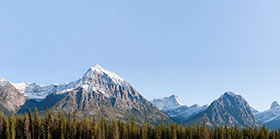Publications
Development of the current paradigm of subsurface petroleum (Head, I.M., Jones, D.M., Larter, S.R. (2003). Biological activity in the deep subsurface and the origin of heavy oil. Nature 426 344-352)
Demonstration that crude oil is biodegraded naturally in reservoirs under anaerobic conditions (Aitken, C.M., Jones, D.M., Larter,S.R. (2004). Anaerobic hydrocarbon biodegradation in deep subsurface oil reservoirs. Nature 431, 291-294)
Determination of the actual insitu biodegradation rates of crude oil in petroleum reservoirs (Larter, S., Huang, H., Adams, J., Bennett, B., Jokanola, O., Oldenburg, T., Jones, M.,I. Head, I., Riediger, R., Fowler, M. (2006). The controls on the composition of biodegraded oils in the deep subsurface: Part II – Geological controls on subsurface biodegradation fluxes and constraints on reservoir-fluid property prediction: American Association of Petroleum Geologists Bulletin 90, 921-938.
Geological controls on W. Canada petroleum biofacies. (Adams, J., Riediger, C., Fowler, M. and Larter, S. (2006). Thermal controls on biodegradation around the Peace River tar sands: Paleo-pasteurization to the west. Journal Of Geochemical Exploration, v. 89, 1-4.
Demonstration that subsurface microbial oil conversion proceeds via methanogenesis using carbon dioxide reduction with hydrogen (Jones, D. M., Head, I. M., Gray, N. D., Adams, J. J., Rowan, A. K., Aitken, C. M., Bennett, B., Huang, H., Brown, A., Bowler, B. F. J., Oldenburg, T., Erdmann, M., Larter, S. R. (2008). Crude-oil biodegradation via methanogenesis in subsurface petroleum reservoirs. Nature 451, 176-180
The thermodynamics of subsurface methanogenic biodegradation. Dolfing, J., Larter, S. R. and Head, I. M. Thermodynamic constraints on methanogenic crude oil biodegradation. ISME Journal, April 2008. Volume 2, Issue 4, pp 442-452.
Design of recovery processes in heavy oil reservoirs (Larter, S., Adams, J., Gates, I. D., Bennett, B., Huang, H. (2008). The origin, prediction and impact of oil viscosity heterogeneity on the production characteristics of tar sand and heavy oil reservoirs. Journal of Canadian Petroleum Technology 47, 52-61
Anaerobic hydrocarbon biodegradation in deep subsurface oil reservoirs.Aitken, C.M., Jones, D.M. & Larter, S.R. Nature 431, 291-294 (2004)
Biogeochemistry – hexadecane decay by methanogenesis Anderson, R.T. & Lovley, D.R.. Nature 404, 722-723 (2000)
Biological activity in the deep subsurface and the origin of heavy oil. Head, I.M., Jones, D.M. & Larter, S.R. Nature, 426, 344-352 (2003)
Crude oil biodegradation in subsurface petroleum reservoirs proceeds via methanogenesis. Jones, D.M., Head, I.M., Gray, N.D., Adams, J.J., Rowan, A. K., Aitken, C.M., Bennett, B., Huang, H. Brown, A., Bowler, B.F.J., Erdmann, M. & Larter, S.R. Nature, in review (2007)
Biodegradation and mixing of crude oils in Eocene Es3 reservoirs of the Liaohe basin, northeastern China Koopmans MP, Larter SR, Zhang CM, et al. (2002). AAPG BULL 86 (10): 1833-1843
The controls on the composition of biodegraded oils. (Part 1) Biodegradation rates in petroleum reservoirs in the deep subsurface. Larter, S. et al. Org. Geochem. 34, 601-613 (2003)
Biodegradation, gas destruction and methane generation in deep subsurface petroleum reservoirs. Petroleum Geology Larter, S.R., et al.: North-West Europe and Global Perspectives—Proceedings, Geology Conferences Ltd. p 633-639 (Geological Society, London, 2005)
Biodegradation of oil in uplifted basins prevented by deep-burial sterilization.Wilhelms, A., Larter, S.R., Head, I. et al. (2001) Nature 411 (6841), 1034-1037
Methane formation from long-chain alkanes by anaerobic microorganisms. Zengler, K., Richnow, H.H., Rossello-Mora, R., Michaelis, W. & Widdel, F. Nature 401, 266-269 (1999)




